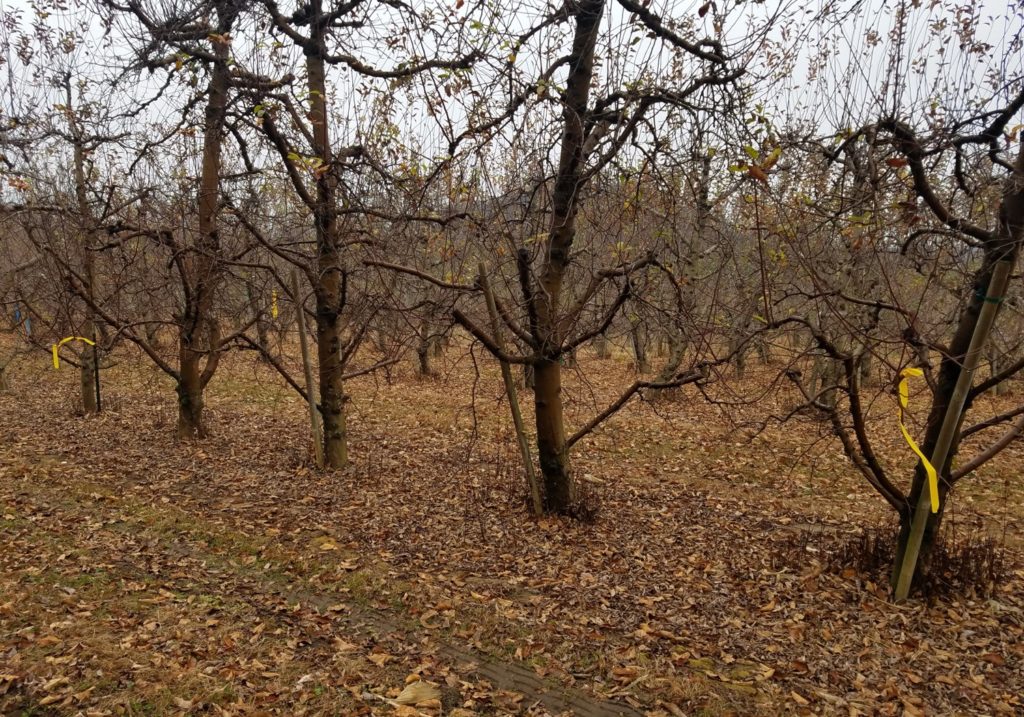Pre-Season Disease Clean-Up
go.ncsu.edu/readext?586574
en Español / em Português
El inglés es el idioma de control de esta página. En la medida en que haya algún conflicto entre la traducción al inglés y la traducción, el inglés prevalece.
Al hacer clic en el enlace de traducción se activa un servicio de traducción gratuito para convertir la página al español. Al igual que con cualquier traducción por Internet, la conversión no es sensible al contexto y puede que no traduzca el texto en su significado original. NC State Extension no garantiza la exactitud del texto traducido. Por favor, tenga en cuenta que algunas aplicaciones y/o servicios pueden no funcionar como se espera cuando se traducen.
Português
Inglês é o idioma de controle desta página. Na medida que haja algum conflito entre o texto original em Inglês e a tradução, o Inglês prevalece.
Ao clicar no link de tradução, um serviço gratuito de tradução será ativado para converter a página para o Português. Como em qualquer tradução pela internet, a conversão não é sensivel ao contexto e pode não ocorrer a tradução para o significado orginal. O serviço de Extensão da Carolina do Norte (NC State Extension) não garante a exatidão do texto traduzido. Por favor, observe que algumas funções ou serviços podem não funcionar como esperado após a tradução.
English
English is the controlling language of this page. To the extent there is any conflict between the English text and the translation, English controls.
Clicking on the translation link activates a free translation service to convert the page to Spanish. As with any Internet translation, the conversion is not context-sensitive and may not translate the text to its original meaning. NC State Extension does not guarantee the accuracy of the translated text. Please note that some applications and/or services may not function as expected when translated.
Collapse ▲ Orchard clean up during the fall and winter months, can save some apple disease-associated headaches during the season. From a disease management standpoint, the main purpose of pre-season disease management is to reduce overwintering populations of bacterial (fire blight) and fungal (e.g. apple scab and bitter rot/Glomerella leaf spot) pathogens. In consideration of last year’s (and so far this year’s) rain, there is a strong likelihood that disease pressure will be high to start the 2019 growing season. Management strategies aimed at reducing apple scab (and likely Glomerella leaf spot) should conducted during the late fall and no later than early spring (which in the Southern Appalachian region that means NOW). Options include:
Orchard clean up during the fall and winter months, can save some apple disease-associated headaches during the season. From a disease management standpoint, the main purpose of pre-season disease management is to reduce overwintering populations of bacterial (fire blight) and fungal (e.g. apple scab and bitter rot/Glomerella leaf spot) pathogens. In consideration of last year’s (and so far this year’s) rain, there is a strong likelihood that disease pressure will be high to start the 2019 growing season. Management strategies aimed at reducing apple scab (and likely Glomerella leaf spot) should conducted during the late fall and no later than early spring (which in the Southern Appalachian region that means NOW). Options include:
- Application of 40 lb/A of urea to the orchard floor. This will speed up leaf degradation by soil microbes.
- Flail mowing. This also speeds up leaf degradation by soil microbes by increasing the surface area of each leaf. Raking leaves and fruit and removing them from the orchard is another alternative.
- Application of dolomitic lime to the orchard floor (2.25/A).
Fire blight cankers serve as an overwintering location for the fire blight bacterium, Erwinia amylovora, and it is also suspected that these cankers also serve as an overwintering location for Colletotrichum spp. the fungal pathogen causing Glomerella leaf spot and bitter rot on apple. As spring temperatures warm, the fire blight bacteria ooze from the cankers and serve as primary inoculum (the primary source for infection) for blossom blight (and early shoot blight). Consider the following when pruning out fire blight cankers:
- Cankers not in main scaffold/trunk: These cankers result from blossom and slowed/ aborted shoot infections. Prune out at least 12″ from the canker margin and try to cut into 2-yr-old (or older wood). The reasoning for pruning beyond the canker margin is due to the fact that the fire blight pathogen travels faster and thus further than the observed symptoms.
- If the canker exists in the main trunk it may not be worth cutting out. If the trunk canker occurs in a more traditional orchard (i.e. not high density) you may decide to leave the tree in the ground and determine if you are still producing enough apples on that tree to be profitable. However, I’ll provide a simple warning that those cankers will likely increase your risk of fire blight throughout the orchard and it would be smart to apply a late silver/green tip copper application for protection (more on that in the next post).
- If the main scaffold in a high density planting has evidence of fire blight damage, you may want to consider pulling the tree to prevent the rapid spread of fire blight throughout the orchard.
- Do NOT leave pruned wood sitting in the orchard. Your best course of action is to remove the infected wood and toss it in the burn pile.



